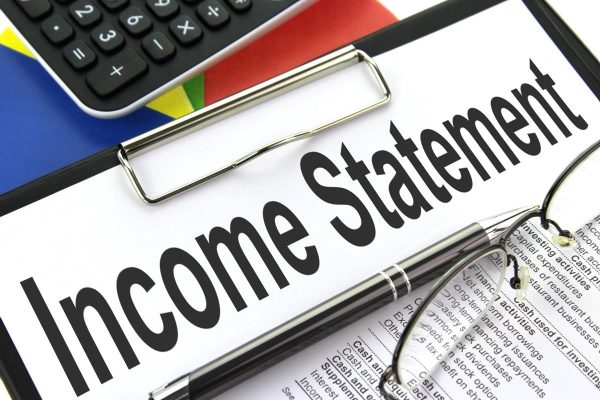

Finance
What To Know About Tax Planning For Businesses
Modified: February 21, 2024
Discover key information about tax planning for businesses and gain valuable insights on how finance strategies can optimize your financial performance.
(Many of the links in this article redirect to a specific reviewed product. Your purchase of these products through affiliate links helps to generate commission for LiveWell, at no extra cost. Learn more)
Table of Contents
- Introduction
- Importance of Tax Planning for Businesses
- Understanding Business Taxes
- Key Tax Planning Strategies for Businesses
- Choosing the Right Business Entity
- Taking Advantage of Tax Deductions and Credits
- Managing Depreciation and Capital Expenses
- Utilizing Employee Benefits and Tax-Advantaged Retirement Plans
- Planning for Succession and Exit Strategies
- Seeking Professional Assistance for Tax Planning
- Conclusion
Introduction
Tax planning is a crucial aspect of running a successful business. It involves strategizing and optimizing your financial decisions to minimize tax liabilities and maximize your after-tax profits. With a well-executed tax plan, businesses can maintain financial stability, boost cash flow, and gain a competitive edge in the market.
Effective tax planning requires a deep understanding of the complex and ever-changing tax laws and regulations. It involves careful consideration and analysis of various factors such as business structure, expenses, deductions, credits, and long-term financial goals.
In this article, we will explore the importance of tax planning for businesses and discuss key strategies that can help you achieve financial success while staying compliant with tax laws. Whether you’re a small startup, a growing mid-sized company, or a multinational corporation, implementing these tax planning strategies can have a significant impact on your bottom line.
By proactively managing your tax obligations, you can optimize your business operations, reinvest in growth initiatives, and ensure long-term financial stability. So, let’s dive in and explore the world of tax planning for businesses.
Importance of Tax Planning for Businesses
Tax planning is not just about reducing the amount of taxes your business owes. It goes beyond that, providing a strategic approach to managing your financial resources and optimizing your tax efficiency. Here are some key reasons why tax planning is essential for businesses:
- Maximizing Tax Savings: By implementing effective tax planning strategies, businesses can legally minimize their tax liabilities. This allows them to keep more of their hard-earned money and allocate those savings towards growth initiatives, research and development, or expanding their operations.
- Maintaining Compliance: Tax laws and regulations are complex and constantly evolving. It can be challenging for businesses to stay up-to-date and ensure compliance with all the requirements. Tax planning helps you navigate through the intricacies of tax laws, ensuring that you meet all your compliance obligations and avoid costly penalties.
- Improving Cash Flow: By strategically managing your tax payments and taking advantage of available deductions and credits, tax planning can significantly improve your cash flow. By reducing your tax burden, you will have more capital available to reinvest in your business, pay off debts, or take advantage of new opportunities.
- Enhancing Business Efficiency: A well-designed tax plan takes into account your business structure, income streams, and expenses. It helps you identify areas where you can optimize your financial operations, streamline processes, and improve overall efficiency.
- Facilitating Expansion and Growth: Proper tax planning can provide you with the financial resources needed to expand your business. By minimizing your tax liabilities, you can allocate those savings towards new product development, marketing campaigns, employee training, or other growth initiatives.
In summary, tax planning is not just about saving money on taxes. It is a strategic approach that helps businesses maintain compliance, optimize their cash flow, enhance efficiency, and fuel their growth. By implementing effective tax planning strategies, businesses can achieve long-term financial success and unlock their full potential.
Understanding Business Taxes
Before delving into tax planning strategies, it’s important to have a solid understanding of the different types of taxes that businesses are subject to. Here are some key aspects of business taxes that you should be familiar with:
- Income Taxes: Businesses are typically required to pay income taxes on their net profits. The tax rate may vary depending on the business structure. Corporations, for example, are subject to corporate income tax, while sole proprietorships and partnerships pay taxes on their individual tax returns.
- Self-Employment Taxes: If you’re a self-employed individual or a business owner, you may be subject to self-employment taxes. This tax includes both the employer and employee portions of Social Security and Medicare taxes.
- Employment Taxes: If you have employees, you are responsible for withholding and depositing their federal income tax, Social Security, and Medicare taxes. Additionally, you’re required to pay the employer’s portion of these taxes.
- Sales Taxes: Depending on your location and the nature of your business, you may need to collect and remit sales taxes to the appropriate state and local authorities. Sales tax rates and regulations can vary, so it’s crucial to understand the requirements specific to your jurisdiction.
- Property Taxes: If your business owns real estate or tangible personal property, you may need to pay property taxes. The amount of property tax owed is typically based on the assessed value of the property.
- Excise Taxes: Certain industries, such as alcohol, tobacco, and gasoline, are subject to excise taxes. These taxes are imposed on specific goods or activities and are usually included in the purchase price.
It’s important to note that tax laws and regulations can vary by jurisdiction, so it’s essential to consult with a tax professional or research the specific requirements applicable to your business.
By understanding the different types of business taxes and how they apply to your specific situation, you can better navigate the tax landscape and develop effective strategies for minimizing your tax liabilities.
Key Tax Planning Strategies for Businesses
When it comes to tax planning for businesses, there are several strategies that can help you reduce your tax liabilities and optimize your financial position. Here are some key strategies to consider:
- Choosing the Right Business Entity: The choice of business entity, such as sole proprietorship, partnership, corporation, or LLC, can have significant tax implications. Each entity type is subject to different tax rules, so it’s important to select the one that aligns with your business goals and offers the most favorable tax treatment.
- Taking Advantage of Tax Deductions and Credits: Familiarize yourself with the tax deductions and credits available to your business. Properly documenting and claiming these deductions can help reduce your taxable income. Common deductions include expenses for employee wages, rent, utilities, marketing, and professional services. Additionally, tax credits, such as the research and development credit or the small business health care credit, can provide substantial tax savings.
- Managing Depreciation and Capital Expenses: Understanding how to depreciate assets and deduct capital expenses is crucial for tax planning. Take advantage of depreciation methods, such as the Modified Accelerated Cost Recovery System (MACRS), to spread out the cost of long-term assets over their useful life. Additionally, consider the Section 179 deduction, which allows for immediate expensing of certain qualifying assets.
- Utilizing Employee Benefits and Tax-Advantaged Retirement Plans: Offering employee benefits, such as health insurance plans or retirement plans, not only attracts and retains talent but can also provide tax advantages. Contributions to retirement plans, such as a 401(k) or a SEP-IRA, are typically tax-deductible for the business and can help reduce your taxable income.
- Planning for Succession and Exit Strategies: If you have long-term plans for transitioning out of your business, proper tax planning is essential. By structuring the succession or sale of your business in a tax-efficient manner, you can minimize the tax impact and maximize your financial gains.
It’s important to note that tax planning should not be done in isolation. It should be integrated into your overall business and financial strategy. Consult with a qualified tax professional who can help you navigate the complexities of tax laws and tailor a tax plan that aligns with your business goals.
By implementing these tax planning strategies, businesses can optimize their financial position, reduce tax burdens, and ensure long-term success in a competitive market.
Choosing the Right Business Entity
When starting a business, one of the most important decisions you’ll need to make is choosing the right business entity. The entity you select will not only impact your legal and operational structure but also have significant tax implications. Here are some key considerations when choosing the right business entity:
- Sole Proprietorship: This is the simplest form of business entity, where the business is owned and operated by a single individual. While it offers simplicity and full control, it does not provide any legal or tax separation between the business owner and the business itself. The owner reports business income and expenses on their personal tax return.
- Partnership: A partnership is formed when two or more individuals join together to carry on a business. Partnerships can be either general partnerships, where all partners have shared liability, or limited partnerships, where some partners have limited liability. Income and expenses are typically passed through to the partners, who report them on their individual tax returns.
- Corporation: A corporation is a separate legal entity that provides limited liability protection to its owners (shareholders). Corporations have more complex legal and operating requirements but offer various tax advantages. Corporations are subject to corporate income tax, and shareholders also pay personal income tax on any dividends they receive.
- Limited Liability Company (LLC): An LLC combines the limited liability protection of a corporation with the flexibility and simplicity of a partnership. LLCs can choose to be taxed as a partnership (pass-through taxation) or as a corporation. The choice of tax classification can have significant tax implications.
When choosing the right business entity, it’s important to consider factors such as liability protection, tax implications, flexibility, and long-term business goals. Each entity type has its own advantages and disadvantages from both a legal and tax perspective.
Consulting with a qualified tax professional or an attorney who specializes in business formation can be invaluable in making the right decision for your business. They can help you evaluate the specific circumstances and goals of your business and provide guidance on the most advantageous entity structure.
Remember, choosing the right business entity is not a decision to be taken lightly. It can have profound implications on your taxes, personal liability, and ability to grow and expand your business. Take the time to carefully consider your options and seek professional advice to ensure that you make the best choice for your specific business needs.
Taking Advantage of Tax Deductions and Credits
One of the key strategies for minimizing business tax liabilities is to take advantage of tax deductions and credits. These are valuable tools that can significantly reduce your taxable income and overall tax burden. Here are some important considerations when it comes to tax deductions and credits:
- Deductible Business Expenses: Familiarize yourself with the expenses that can be deducted from your taxable income. Common deductible business expenses include employee wages, rent or lease payments, utilities, office supplies, marketing and advertising costs, professional fees, travel expenses, and insurance premiums. It’s crucial to keep detailed records and receipts to substantiate these expenses.
- Section 179 Deduction: The Section 179 deduction allows businesses to deduct the full cost of qualifying assets in the year of purchase, rather than depreciating them over time. This deduction is especially beneficial for small businesses that make significant equipment purchases, as it can provide substantial tax savings and incentivize business investments.
- Research and Development (R&D) Credit: The R&D credit is designed to encourage innovation and technological advancement. If your business engages in qualified research activities, such as developing new products or processes, you may be eligible for this credit. It can help offset your tax liability and provide additional funds for future research and development initiatives.
- Small Business Health Care Credit: Eligible small businesses that provide health insurance to their employees may qualify for the Small Business Health Care Credit. This credit can help offset a portion of the premiums paid by the business, making it more affordable to offer health insurance coverage to employees.
- Educational and Training Expenses: Deductions and credits may be available for business-related educational expenses, such as workshops, seminars, industry certifications, or college courses. Investing in your employees’ education and skills development can be a valuable tax strategy.
It’s important to note that tax deductions and credits may have specific criteria and limitations. Consulting with a tax professional can help you navigate the complexities, ensure that you meet all the requirements, and optimize your tax planning strategy.
Remember to keep accurate records of all deductible expenses and properly document your eligibility for tax credits. This will help support your tax positions and ensure compliance with tax regulations.
Tax deductions and credits should not be overlooked as they can significantly reduce your tax liabilities and improve your overall financial position. Reviewing your expenses, staying informed about available deductions and credits, and working with a tax professional can help you make the most of these valuable tax-saving opportunities.
Managing Depreciation and Capital Expenses
Managing depreciation and capital expenses is an important aspect of tax planning for businesses. It involves understanding the tax treatment of long-term assets and utilizing strategies to optimize your deductions and tax savings. Here’s what you need to know:
Depreciation:
Depreciation refers to the gradual decrease in the value of assets over time. It recognizes that assets such as buildings, machinery, and vehicles deteriorate and become less valuable as they are used. By accounting for depreciation, businesses can spread the cost of an asset over its useful life for tax purposes.
There are several depreciation methods available, but one common method used by businesses is the Modified Accelerated Cost Recovery System (MACRS). MACRS allows businesses to deduct the cost of certain assets over a specified period, which is determined by the asset’s class life and recovery period.
Capital Expenses:
Capital expenses are expenses incurred to acquire, improve, or extend the life of a long-term asset. These expenses are generally not fully deductible in the year they are incurred. Instead, they are capitalized and deducted over a period of time through depreciation or amortization.
However, businesses may have opportunities to take advantage of certain tax provisions that allow for immediate expensing of capital expenses. One such provision is the Section 179 deduction, which allows businesses to deduct the full cost (up to a certain limit) of qualifying assets in the year they are placed in service.
When managing depreciation and capital expenses, consider the following strategies:
- Asset Classification: Understand the classification of assets for depreciation purposes, as different assets may have different recovery periods. Classifying assets correctly ensures accurate depreciation deductions.
- Bonus Depreciation: Take advantage of bonus depreciation, which allows businesses to deduct a percentage of the cost of qualifying assets in the year they are acquired. This can provide significant tax savings in the early years of asset ownership.
- Timing of Asset Purchases: Consider the timing of asset purchases to optimize depreciation deductions. By strategically purchasing assets at the right time, you can maximize depreciation deductions and minimize taxable income.
- Section 179 Deduction: Evaluate whether the Section 179 deduction is applicable to your business. This deduction can provide immediate expensing of qualifying asset purchases, up to the designated limit, reducing your taxable income in the year of purchase.
Managing depreciation and capital expenses requires careful planning and understanding of tax regulations. Consult with a tax professional to ensure that you optimize your deductions, maximize your tax savings, and comply with all relevant tax laws.
By effectively managing depreciation and capital expenses, businesses can reduce their taxable income, improve cash flow, and invest in necessary assets for growth and expansion.
Utilizing Employee Benefits and Tax-Advantaged Retirement Plans
Employee benefits and tax-advantaged retirement plans not only provide valuable incentives for employees but also offer significant tax advantages for businesses. By offering these benefits, businesses can attract and retain talented employees while enjoying tax savings. Here’s how you can effectively utilize employee benefits and tax-advantaged retirement plans:
Health Insurance:
Offering health insurance benefits to employees not only promotes their well-being but can also provide tax advantages for businesses. Contributions made towards employee health insurance premiums are typically tax-deductible. Additionally, depending on the size of your business, you may qualify for the Small Business Health Care Tax Credit, which can further reduce your tax liability.
Retirement Plans:
Providing a tax-advantaged retirement plan, such as a 401(k) or a Simplified Employee Pension (SEP) IRA, can be a powerful tool for attracting and retaining talent while offering tax benefits for both the business and the employees. Contributions made by the business to the retirement plan are typically tax-deductible, and earnings within the plan grow tax-deferred until withdrawal.
Matching Contributions:
If your business offers a retirement plan with a matching contribution feature, it can provide additional tax benefits. The matching contributions made by the business are tax-deductible, and they also serve as a valuable employee incentive.
Tax Credits:
Explore potential tax credits available for offering certain employee benefits. For instance, the Small Employer Pension Plan Startup Credit provides credits to small businesses that establish new retirement plans. Additionally, the Retirement Savings Contributions Credit (also known as the Saver’s Credit) offers a tax credit to eligible low- and moderate-income individuals who contribute to retirement plans.
Flexible Spending Accounts (FSAs) and Health Savings Accounts (HSAs):
FSAs and HSAs are tax-advantaged accounts that allow employees to set aside pre-tax funds to cover qualified medical expenses. Contributions made by employees are deducted from their taxable income, reducing their tax liability. As an employer, offering these accounts can provide additional tax savings for your business.
It’s important to note that implementing employee benefits and retirement plans require careful consideration of legal and regulatory requirements. Working with an experienced benefits administrator or consulting with a qualified tax professional can help ensure compliance and optimize the tax benefits for both your business and your employees.
By offering employee benefits and utilizing tax-advantaged retirement plans, businesses can attract and retain top talent, support their employees’ financial well-being, and enjoy significant tax savings.
Planning for Succession and Exit Strategies
Planning for succession and developing an exit strategy is a vital aspect of long-term business planning. It involves preparing for the transition of leadership and ownership, whether it’s passing the business onto family members, selling it to a third party, or pursuing other strategic options. Effective succession and exit planning can help ensure a smooth transition, maximize the value of the business, and minimize potential tax implications. Here are key considerations when planning for succession and exit strategies:
Identify and Train Successors:
Identify potential successors within your organization or family members who can take over the business. Invest in their training and development to ensure a seamless transition. If necessary, consider hiring external candidates or consultants to fill any knowledge or skill gaps and facilitate a smooth handover.
Valuation of the Business:
Estimate the value of your business through a professional appraisal. Knowing the value of your business is crucial when considering succession or sale options. This valuation will help determine an appropriate selling price, negotiate with potential buyers, and plan for potential tax implications.
Tax Planning for the Transition:
Consult with a tax professional to develop a tax-efficient succession or exit plan. Proper tax planning is crucial to minimize tax liabilities and maximize your after-tax proceeds. Strategies may include utilizing tax-deferred exchanges, structuring the sale as an installment agreement, or taking advantage of any available exemptions or credits.
Sell to Employees or Family Members:
If you intend to keep the business within the family or sell it to loyal employees, explore options like employee stock ownership plans (ESOPs) or management buyouts. These strategies can preserve the business legacy and potentially offer tax advantages for both the seller and the buyer.
Sell to a Third Party:
If you decide to sell your business to a third party, engage in extensive due diligence to find the right buyer. Consider hiring a business broker or consulting with investment bankers to help with the sale process. Properly structuring the sale agreement and negotiating the terms will be crucial in maximizing the value of your business.
Succession and Estate Planning:
Ensure you have a comprehensive estate plan that aligns with your succession and exit strategy. This includes updating your will, establishing trusts, and addressing any potential inheritance or estate tax implications. Consider involving legal professionals who specialize in business succession and estate planning to ensure a smooth and tax-efficient transfer of assets.
Planning for succession and developing an exit strategy requires time, careful consideration, and expert guidance. It’s essential to consult with professionals, such as business advisors, tax experts, estate planners, and legal counsel who can provide the necessary expertise and support. By planning ahead, you can secure the future of your business, maximize its value, and minimize potential tax liabilities during the transition process.
Seeking Professional Assistance for Tax Planning
When it comes to tax planning for your business, seeking professional assistance is highly recommended. Tax laws and regulations can be complex and ever-changing, making it challenging to navigate on your own. Here are some reasons why it’s beneficial to work with a tax professional:
Expertise and Knowledge:
Tax professionals have a deep understanding of the tax code, regulations, and recent changes. They stay up-to-date with the latest developments and have the expertise to interpret how these changes may impact your business. Their knowledge can help you navigate the complexities of tax planning and ensure compliance with all relevant regulations.
Tailored Tax Strategies:
A tax professional can assess your unique business situation and develop customized tax strategies that align with your goals. They will analyze your financial data, identify opportunities for tax savings, and recommend specific actions you can take to maximize your after-tax profits. Their tailored approach will help optimize your tax planning and minimize potential risks.
Strategic Planning:
Tax professionals can help you develop a long-term tax strategy that aligns with your business objectives. They can aid in forecasting future tax liabilities, assessing the impact of different financial decisions, and identifying potential tax advantages for upcoming business initiatives. By incorporating tax planning into your overall business strategy, you can better manage your tax obligations and maintain a competitive edge.
Tax Compliance:
Staying compliant with tax laws and regulations is crucial to avoid penalties and audits. Tax professionals have a detailed understanding of tax compliance requirements and can ensure that your business meets all deadlines and filing obligations. They will help you navigate the complexities of tax forms, reports, and documentation, reducing the risk of errors or omissions that could trigger an audit.
Audit Support:
If your business is selected for an audit, having a tax professional by your side can provide invaluable support. They can assist in gathering the necessary documentation, communicating with tax authorities, and representing your business during the audit process. Their expertise can help ensure that your rights are protected and that the audit proceeds smoothly.
When seeking professional assistance for tax planning, consider working with a certified public accountant (CPA) or a tax attorney who specializes in business taxation. Look for professionals who have experience working with businesses similar to yours and have a track record of delivering effective tax planning strategies.
By partnering with a tax professional, you can navigate the complexities of tax planning, optimize your financial position, and have peace of mind knowing that your tax obligations are in expert hands.
Conclusion
Tax planning is a critical aspect of running a successful business. By implementing effective tax strategies, businesses can minimize their tax liabilities, optimize their financial position, and ensure long-term success in a competitive market. It involves understanding the complexities of business taxes, identifying tax advantages, and making informed financial decisions.
Throughout this article, we have explored various key aspects of tax planning for businesses. We discussed the importance of tax planning and how it can maximize tax savings, maintain compliance, improve cash flow, enhance efficiency, and fuel growth. We also highlighted strategies such as choosing the right business entity, taking advantage of tax deductions and credits, managing depreciation and capital expenses, utilizing employee benefits and tax-advantaged retirement plans, planning for succession and exit strategies, and seeking professional assistance.
While tax planning can be complex, seeking the guidance of tax professionals and experts can provide invaluable support. They have the knowledge, expertise, and experience to navigate the intricate tax landscape and develop tailored strategies that align with your business goals. They can help you comply with tax laws, identify tax-saving opportunities, and ensure that your business remains financially stable.
Remember, tax planning should be an ongoing process. As tax laws and regulations change, it’s crucial to stay informed and adjust your tax strategies accordingly. Regularly reviewing your financial situation, consulting with professionals, and seeking updates on tax laws can help you adapt and optimize your tax planning strategies.
In conclusion, by prioritizing tax planning and implementing the strategies discussed in this article, businesses can achieve financial success, minimize tax burdens, and thrive in a constantly evolving business environment. By proactively managing your tax obligations, you can unlock opportunities for growth, reinvest in your business, and secure a prosperous future.













